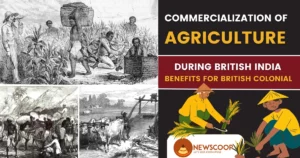History of Tantya Bhil (Birth Place real name in English, Tantya Mama History Jayanti, Tantya Bhil Biography, Tantya Bhil Jayanti Birthplace, Tantya Bhil (Bheel) biography in English UPSC, Madhya Pradesh, Maharashtra region )
The Bhil has a long history of resistance against foreign dominance and exploitation. They have been subjected to different types of oppression, including forced labor, land alienation, and unfair tax laws. The British Raj in India was no exception, and British policies had a significant influence on the Bhil people.
Tantya Bhil is remembered as a folk hero and a symbol of resistance among India’s Bhil people. In the early nineteenth century, he led a rebellion against the British Raj, which was sparked by the British policy of land alienation and exploitative policies.
Who was Tantya Bhil?
Tantya Bhil was born on 26 January 1840 in Badada village of Madhya Pradesh. His father’s name was BhauSingh. Tantya Bhil’s original name was Tandra, but over time, this name evolved into Tantya. This name afterward became well-known. As a result, we shall also remember him as Tantya. Because of his slim body, he came to be called Tantya Bhil (Robinhood of India). Tantya has been related to the Nimar region of Madhya Pradesh and in Nimar, after drying, the plant of Jowar, being tall and thin, is called Tanta. In addition, Tantya Bhil is also called the Robinhood of India.
Tandra or Tantya, has always been strong, courageous, and hardworking. Further, Bhausingh died at the age of thirty and his mother had already died. Tantya was unable to pay the rent after Bhausingh’s death due to the poor crop. Malguzar Shiva Patel permanently removed Tantya from her ancestral property by bringing up the unpaid rent. However, he continued to cultivate his property long after the eviction order was issued.
The Rebellion of Tantya Bhil against the British
- Causes of Rebellion:
- The British policy of land alienation, which drove many Bhil families from their ancestral estates, triggered the uprising.
- This approach was part of a bigger plan to strengthen British control of the region and utilize its resources.
- The British’s exploitative practices, as well as the hefty taxes imposed on the Bhil people, spurred the insurrection.
- Tantya Bhil led a rebellion against the British Raj in the early 19th century.
- He is recognized for his bravery and leadership, as well as his opposition to British attempts to subdue the Bhil people.
- The revolt spanned central and western India and lasted many months.
- The Bhil warriors were unprepared and faced the British force with their primitive weapons.
- Further, British troops violently quashed the uprising, and many Bhil warriors were killed or imprisoned.
Also Read: History of Kundavai Pirattiyar
Tantya Bhil – Arrest
Tantya Bhil was captured by British officials in the 19th century during his uprising against the British Raj. The precise circumstances of his imprisonment and the allegations leveled against him are unknown, although he was most likely apprehended while leading his supporters in the battle against the British forces.
Death of Tantya Bhil
Tantya Bhil was captured (arrested) by the British and died in captivity. His death date and cause of death are unknown. The British troops violently quashed the uprising, and many Bhil warriors were killed or imprisoned. The British authorities enforced harsh punishments on the Bhil people, forcing many to evacuate their villages. The Bhil community was deeply affected by the insurrection, which is regarded as a symbol of their battle for self-determination and dignity.
Conclusion
It’s important to note that the Tantya Bhil rebellion is not well documented and there is not much information available about it, but it’s considered a symbol of resistance and bravery among the Bhil community, and even today Tantya Bhil is called “Tantya Mama” in some states of India.
Thank You!





